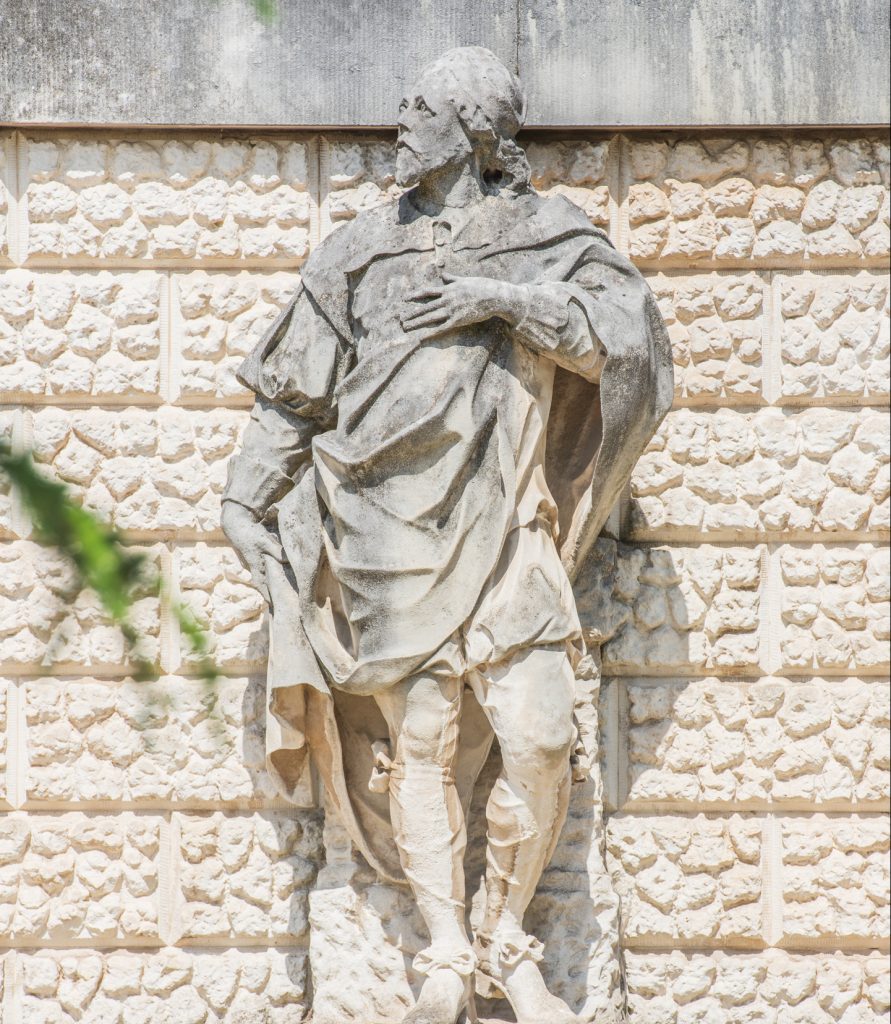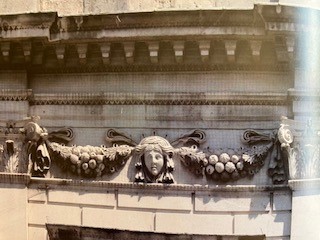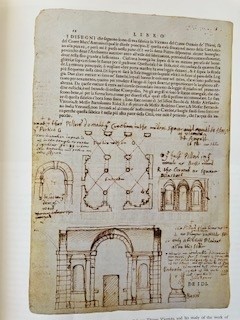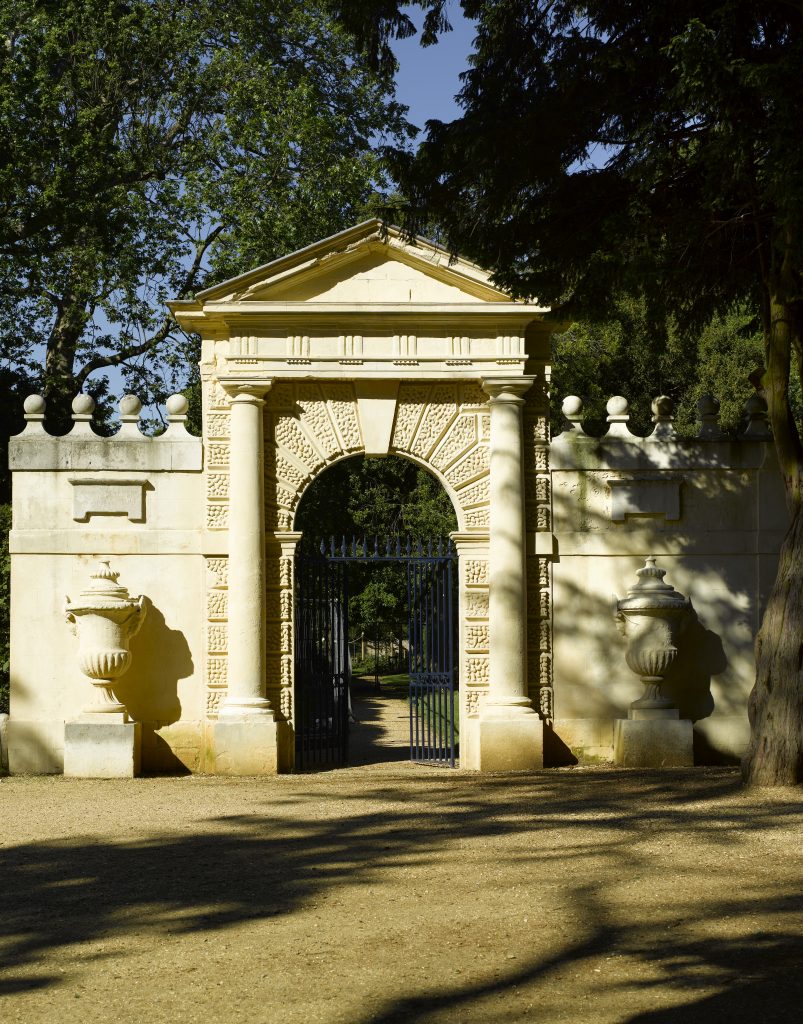An A to Z of the Chiswick House Archives: J for Jones, Inigo Jones
450 years since his birth, volunteer archivist Cluny Wells shares what she knows about celebrated English architect Inigo Jones, from carpenter’s apprentice to Royal architect.

Along with Andrea Palladeo, architect Inigo Jones was much admired by the 3rd Earl of Burlington. The relocation of Inigo’s Gate (built in 1621 for Beaufort House Chelsea) to the grounds at Chiswick, in 1738, was a tangible statement. This, together with the statues of Jones and Palladio, still standing in front of Chiswick House, indicates the importance of Jones’ work to Burlington.
Inigo Jones (15 July 1573 – 21 June 1652) was born in Smithfield to Welsh-speaking parents. His father was a clothworker, and also called Inigo. According to Christopher Wren, Inigo had been apprenticed to a carpenter working in St Paul’s churchyard at about the age of thirteen, some years before he moved into architecture. There is very little other information about his early life.
It seems likely that Jones visited Italy for the first time in 1601, where he mastered the Italian language, learnt to paint and studied the buildings, particularly admiring those built by Andrea Palladio. In Venice he managed to buy a copy of Palladio’s ‘I Quattro libri dell’architettura’, and throughout his life made notes relating to his work in this book.
Jones travelled from Italy to Denmark, where he worked for King Christian V on the designs for the King’s Rosenborg and Frederiksborg palaces. Whilst there he met King Christian’s sister Anne who was married to James VI of Scotland. When Queen Elizabeth I died, James, heir to the throne and already King of Scotland, also became King James I of England.

On his return to England, Inigo continued reading and learning all he could relating to architecture, he said: “I find no other delight but to learn.” At the same time, he continued creating the ‘masques’ (Court entertainments) at which he excelled, with more and more amazing special effects, usually working with the author and playwright Ben Jonson.
The Royals enjoyed taking part in the entertainment at Court, often giving some input as well. The Queen, in particular, loved dancing. King James, however, did not participate. Masques were about a fantasy world, where the author and designer would leave realism behind and present an ideal setting full of beauty, softness and magical happenings.
Jones and Jonson started working collaboratively in 1604 with Jones designing costumes, backdrops and special effects for masques. Unfortunately, this was not always a smooth partnership – there was a jostling for top billing between them, and professional rivalry, as each felt their input was the more important.
Inigo Jones’s first building commission, from Robert Cecil, the 1st Earl of Salisbury, was to play a part in the design of the New Exchange in the Strand. This would allow him to take positive steps towards establishing himself as an architect with a lasting reputation. Although the final built design did not conform exactly to his plan, it appeared to be loosely based on it.

In 1614, Jones visited Italy for a second time in the company of the Earl of Arundel, and he met Scamozzi, another disciple of Palladio. On his return home in 1615, King James appointed him to the post of Surveyor-General of the King’s Works. He was forty-two.
Following this, Jones started work on the Queen’s House in Greenwich, where he personified his ideas of Palladian style. His concept was that a building’s exterior should have gravitas concealing an interior freedom of thought. Put simply, the building’s exterior would be plainer than its interior. All his Royal houses, and his built scenery in the masques, followed this rule. From the time of the Queen’s illness the Greenwich building stalled, until after Anne and then James’ death. It was finished for Queen Henrietta Maria in 1632.

The only major building with which Jones broke this pattern of the plain exterior was the Banqueting House. This building has female faces in the exterior composite frieze, and ceiling panels by Rubens which depicted the themes of religious, social and moral harmony which King James had sought to achieve in England and Scotland. These panels, based on Aristotle’s ideas of a ‘middle way’ when thinking of extreme views – especially religious ones. These were James’ beliefs, which he held to during his reign, and made for peace.
In 1628 two things would happen to Jones which would have a direct bearing on his life. Firstly, he took on John Webb as his apprentice. Webb learnt well under Jones’ tuition and helped him as he grew less physically able. Secondly, King Charles started 11 years of rule without Parliament. This was not so good for Jones. King Charles did not look for a middle way of governing, and this did not bode well. The King was then forced to recall Parliament. When the Civil War started, the King left London for Oxford, requesting Jones to lend him £500, which was never returned.
In 1645 Inigo was staying at Basing House, one of the last Royalist strongholds, but the inhabitants, including Inigo Jones, had been under siege for months, and it was finally over. By October the Commanding Officer was reinforced by Lieutenant General Oliver Cromwell, for the final assault. Jones and others staying there, including four priests, were all seized, stripped of their clothing and wrapped in blankets, to be taken unceremoniously in a wagon to London. Inigo was comparatively lucky and was soon freed. He had to pay a fine of more than £1000.

Rather ironically, but probably deliberately, Cromwell decided the King’s execution would take place on a platform built for that purpose, right outside the first-floor window of the finest building that Jones had ever created for Royalty – the Banqueting House. It was known by Cromwell’s forces as ‘the Queen’s dancing barn’. It would come to be regarded as Inigo’s enduring masterpiece.
After the fall of the Royalists, Inigo Jones lived in semi-retirement in Somerset House, occasionally providing drawings for John Webb. He had been described as being very frail for some years and was looked after by Webb and his family. Jones died at Somerset House on 21 June 1652, at almost 79 years of age, and was buried alongside his parents at St Benet’s Welsh Church.
In his will, he left his library of books, drawings and designs to his pupil Webb, with the proviso that the collection would not be split up. Unfortunately, when Webb died, his son did not stick to this and began selling things off. Lord Burlington managed to acquire a collection of Inigo’s books, drawings and The Book by Palladio with Inigo Jones’s annotations. These are now in the Chatsworth collection.

We are lucky to have an original design of Inigo’s in the Grounds at Chiswick – The Inigo Jones Gate, built in the 1620s, which can be viewed anytime by those visiting Chiswick House and Gardens, which are free for everyone, everyday.
Some buildings designed by Inigo Jones:
- Queen’s House Greenwich – the first classical villa built in England. A departure from the Elizabethan House.
- The Banqueting House, London, 1619-23
- St Paul’s Church, Covent Garden, 1631-3
- Whitehall Palace, with John Webb, designed between 1632 and 1638
- Queen’s Chapel at St James’ Palace, designed between 1623 and 1626
Sources used:
- Inigo by Michael Leapman
- Inigo Jones by Vaughan Hart
- Catalogue of the drawings by Inigo Jones, John Webb & Isaac de Caus at Worcester College Oxford. John Harris & A.A.Tait